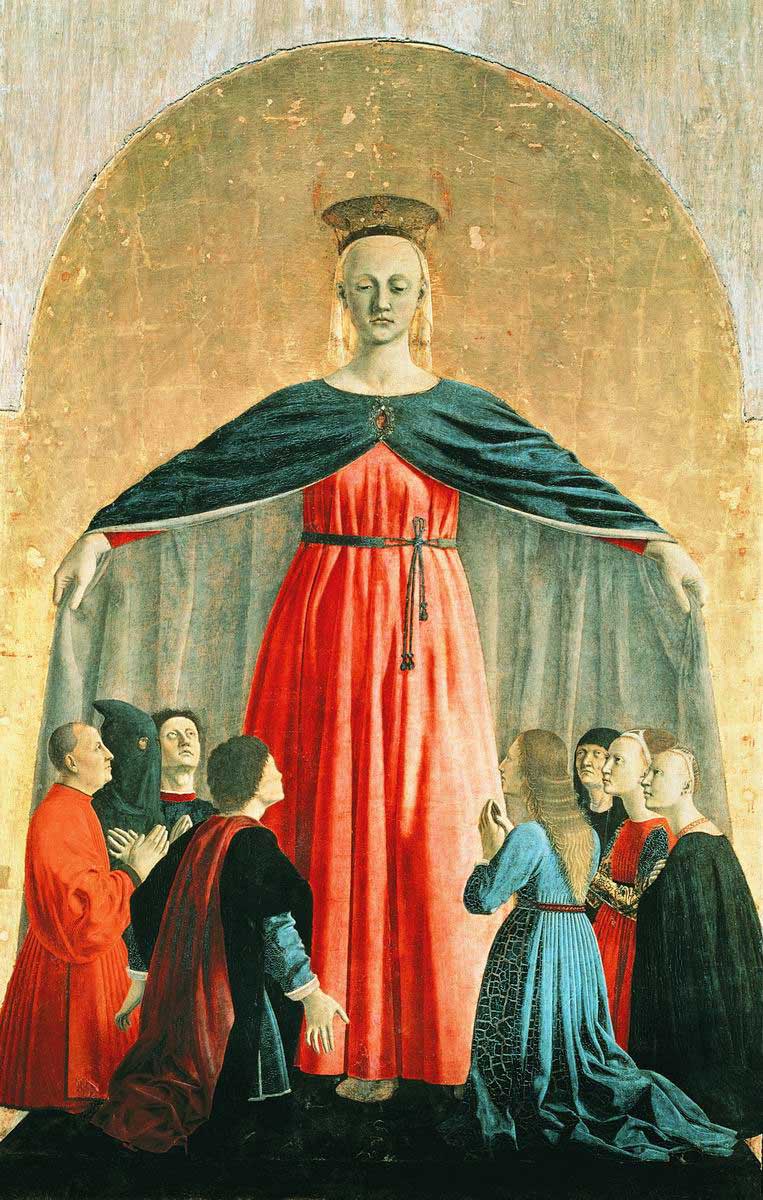Artist Index
A - B - C - D - E - F - G - H - I - J - K - L - M
N - O - P - Q - R - S - T - U - V - W - X - Y - ZBaptism of Christ
Piero della Francesca

Madonna della Misericordia
1460–1462
Oil and tempera on panel
Pinacoteca Comunale, Sansepolcro
The Polyptych of the Misericordia is one of the earliest works of the Italian Renaissance master Piero della Francesca's, located in the Pinacoteca Comunale of Sansepolcro, Tuscany, Italy. The central panel is of the common motif of the Virgin of Mercy or Madonna della Misericordia in Italian.
In 1445, the Compagnia della Misericordia, a confraternity of Borgo San Sepolcro, commissioned Piero to paint a polyptych for them. According to the taste of the time, the polyptych was to be painted with precious colours and have a solid gold background. Piero did not respect the three year time limit set down in the contract—he was busy working on many other projects. The polyptych was only finished seventeen years later in 1462.
The oldest two panels, to the left of the main panel, depict St. Sebastian and St. John the Baptist. St. Sebastian'panel shows a close connection with Masaccio's nudes. Piero painted the outlying panels of the tympanum later; including the Crucifixion at the top centre, St. Benedict, the Angel, the Madonna of the Annunciation, and St. Francis in the sides. Towards 1450 he finished the figures of St. Andrew and St. Bernardino. The predellas, with five scenes of Jesus's life, were mostly executed by assistants.
The last part of the polyptych to be painted was the main central panel showing the Madonna della Misericordia. The panel portrays the mercifully protective gesture of the Madonna enfolding her followers in her mantle.
Piero resolves the difficulty of dealing with a flat solid gold background, requested by the patrons, by placing the kneeling members of the confraternitas (who commissioned the altarpiece) in the realistic space created by the Madonna's mantle, a space resembling the apse of a church. Notably, the Madonna is still portrayed larger in size than the human figures, as tradition in the medieval painting. However, the plastic rendering of the figure, inspired by Masaccio, and the perspective study, inspired by Brunelleschi, are plainly Renaissance.
Aldous Huxley described the painting as the most beautiful in the world, which fortunately was remembered by a British artillery officer in 1944 during World War II, who avoided shelling the town as the Allies advanced through Italy .
References
* Montenegro, Riccardo (May 2007). "Un'arte per tutte le stagioni". Medioevo (124): pp. 34–35.
From Wikipedia. Text is available under the Creative Commons Attribution-ShareAlike License

